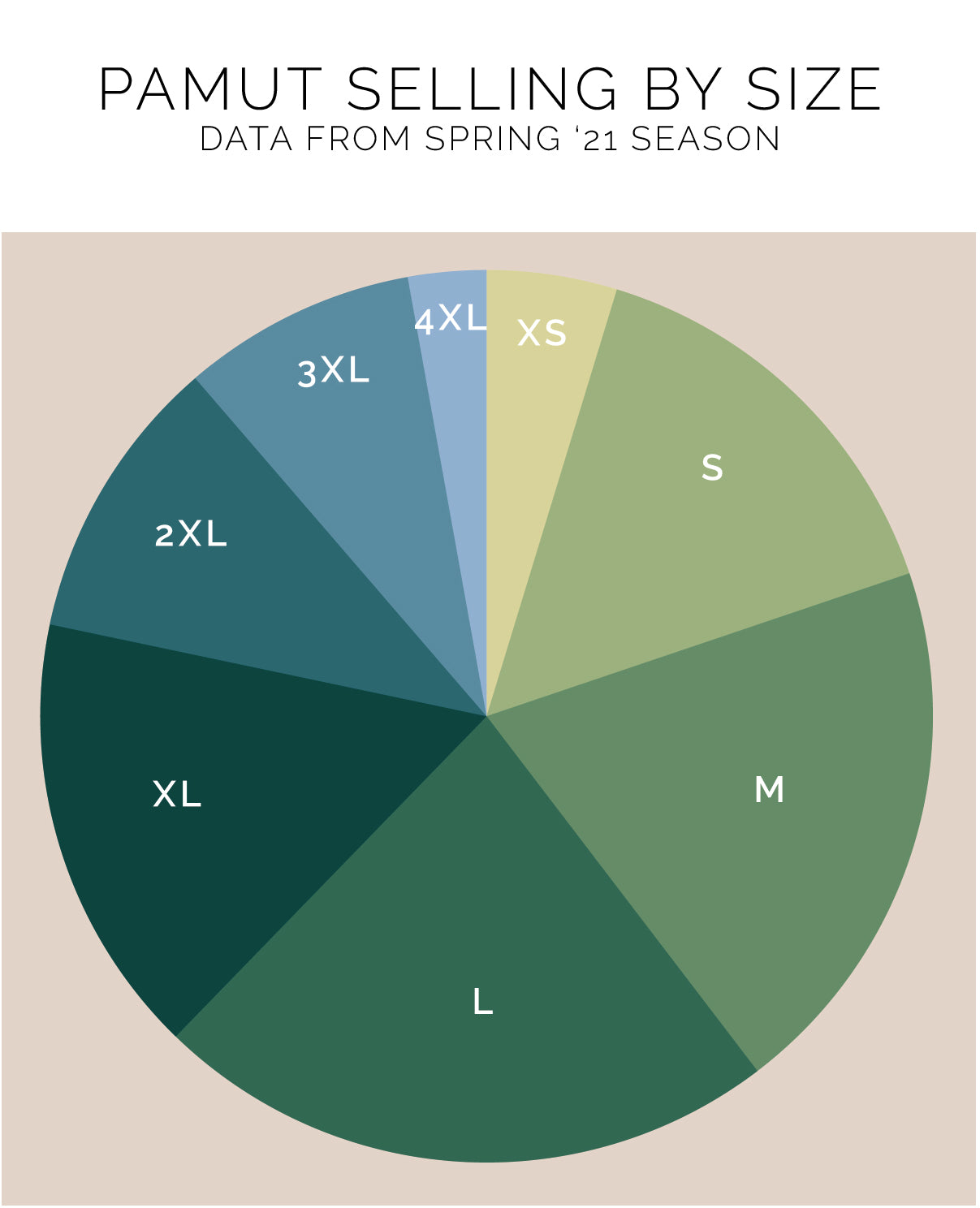
The concept of a custom made garment isn’t new. In fact, it’s how clothing was made up until the Industrial Revolution. Since ancient times, garments were either made at home or cut and sewn to fit by small dress shops. But over just a few decades, there was a monumental shift in how clothing was bought and sold.

The early 1800’s marked the rise of factories and department stores, who formed a supply and distribution chain for ready-made clothing. Because clothing was now produced en masse, those department stores had to devise a way to specify sizing for the first time in history. Stores initially attempted to categorize sizes by age, which quickly proved to be ineffectual. In the 1940’s in an effort to better standardize women’s clothes, the US Department of Agriculture conducted an extensive mail survey. Looking at this survey today, it’s clear that it didn’t accurately represent the population at the time. Participation in the survey was compensated, so the majority of participants consisted of women from a lower socioeconomic status. In addition, the participants were primarily white. Finally, there was a heavy focus on bust measurement while other important measurements were glossed over (it was just assumed that all women who participated had an hourglass figure). As time went by and a thin figure was popularized, the practice of vanity sizing became more common. Stores progressively lowered the numbers of their size offerings. What was a size 12 in the 1960’s became a size 6 today. Women were being pressured to become dangerously thin.

For the modern shopper, sizing in the fashion industry is frustrating at best and deeply wounding at worst. Our current sizing system has created deep-seated issues with body image. Many brands don’t carry above a size 12. If they do, their plus size options are limited and are often poorly sized. Plus size women are rarely represented in ads and media. The unachievable depiction of the "ideal" female body and the lack of size options becomes even more shocking when one is made aware that the average American woman is a size 16. To add to the problem, American sizing standards are based on an hourglass body type, disregarding those who are shaped differently. What’s more, every brand has a different size standard. What’s a size 14 in one brand may be an 18 in another. With this system, we are sending a message of exclusion to anyone who, quite literally, does not fit in.

At Pamut, we’ve taken steps to be more inclusive by offering up to a size 4XL. While this certainly helps, we believe that there is an even better solution to the problem of ill-fitting and poorly sized clothes. The solution has been there all along, but it was impossible to execute on a large scale until very recently.
We believe that the future of fashion is in customized clothing. Making clothing to order based on an individual person’s body was society’s solution to sizing up until the Industrial Revolution. The practice was abandoned when it became clear that mass manufacturing could not allow for customizations (instead, customers employed tailors to alter ready-mades). However, with new technology and the convenience of the internet, it is now possible to bring back customization while maintaining a relatively quick and affordable production timeline. The benefits of customized clothing for both customer and manufacturer are clear: Drastically improved fit, no additional costs for tailoring, reduced returns and exchanges, and little or no excess inventory. However, the greatest improvement that a custom clothing model can contribute to society is a change in the way that people view their own bodies.

With a business model based on custom clothing, much less focus is placed on traditional sizing. Customers can simply send in their measurements, which cause less confusion and fewer negative associations than the long-ingrained number sizes we’ve used for the past century. With more technological advancements, it will eventually be possible to use a body-scanning phone app to obtain measurements, putting even less emphasis on the numbers.

As customized clothing becomes more common and more accessible, fashion as a whole will evolve into a more inclusive and tolerant category. Shopping, once a stressful experience for many, will become more enjoyable when customers know that any garment they order will fit well. Trend-based fast fashion, already on the decline, will give way to fashion based on the concept of a proper and comfortable fit. The most treasured aspect of making custom clothing is how we’re able to honor the art of fashion while innovating towards a more inclusive future. We at Pamut are proud to be at the forefront of this evolution.
* Find more about our custom garment options here.
** Historical information for this article was taken from Time Magazine, Slate, and Wikipedia.
More stories

Shopping the Spring Collection?



